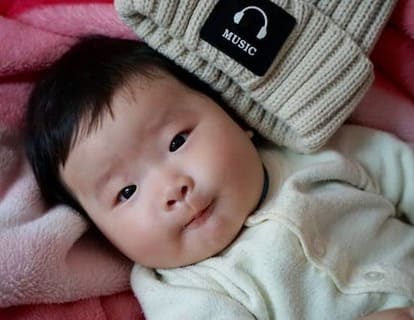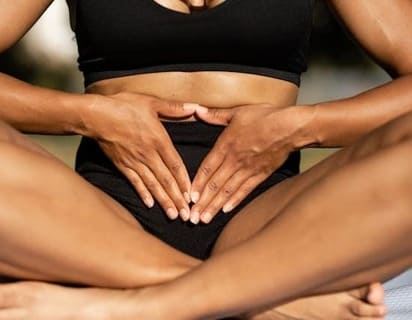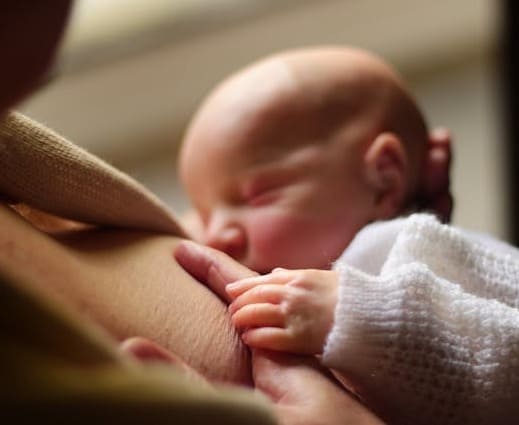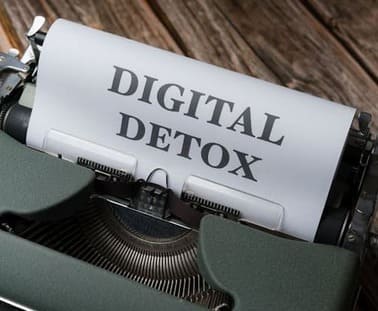Burns & Scalds in Kids: Prevention, Safety, First Aid
As parents, we do everything we can to protect our children from harm, but burns and scalds remain one of the most common childhood injuries. Children are particularly vulnerable to these injuries due to their naturally curious nature, developing motor skills, and physical characteristics that make burns more severe than they would be for adults.
Children’s skin is significantly thinner than adult skin, which means they can sustain deeper burns from lower temperatures and shorter exposure times. What might cause a minor burn in an adult can result in a serious injury requiring medical attention in a child. This vulnerability is especially pronounced in children under five years old, who account for the majority of burn-related emergency room visits.
The good news is that most childhood burns and scalds are entirely preventable with the right knowledge and safety measures. By understanding the risks, implementing proper safety protocols, and knowing how to respond in an emergency, you can create a safer environment for your family while still allowing your children to explore and learn.

Burns and Scalds: What’s the Difference?
Understanding the difference between burns and scalds is important for both prevention and treatment. While both types of injuries damage the skin and underlying tissues, they have different causes and may require slightly different approaches to safety and care.
Burns
Burns are injuries caused by:
- Open flames from candles, fireplaces, matches, or lighters
- Electrical sources including outlets, cords, and appliances
- Chemical substances such as cleaning products, acids, or alkalis
- Hot surfaces like stoves, irons, curling irons, or exhaust pipes
- Sun exposure leading to sunburn
- Friction from rope burns or carpet burns
Scalds
Scalds specifically refer to injuries caused by:
- Hot liquids such as boiling water, coffee, tea, or soup
- Steam from kettles, irons, or cooking pots
- Hot tap water during bathing or washing
- Hot foods like freshly microwaved meals or hot sauces
Both burns and scalds can range from minor first degree injuries affecting only the outer layer of skin to severe third degree burns that damage all layers of skin and underlying tissues. The key to prevention lies in understanding where and how these injuries most commonly occur.
High-Risk Situations and Common Causes
Knowing where and when burns and scalds are most likely to occur helps parents focus their prevention efforts effectively. Here are the most common high-risk situations:
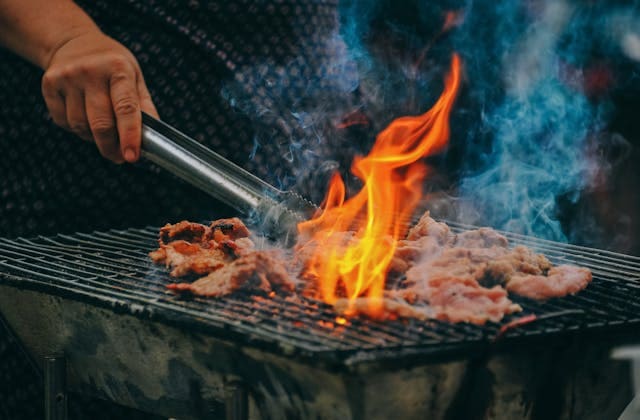
Kitchen Hazards
The kitchen presents multiple burn risks including hot stoves, boiling liquids, microwave-heated foods, and small appliances. Children are naturally drawn to kitchen activities and may reach for interesting-looking pots, cups, or appliances.
Bathroom Dangers
Hot tap water poses a significant scald risk, especially during bath time. Water heaters set too high can deliver dangerously hot water that can cause severe burns in seconds.
Living Areas
Fireplaces, space heaters, hot beverages left on coffee tables, and electrical outlets all present burn risks in common living spaces where children spend much of their time.
Outdoor Hazards
Grills, fire pits, hot car surfaces, playground equipment heated by sun exposure, and fireworks create outdoor burn risks that many parents may not immediately consider.
Electrical Dangers
Uncovered outlets, damaged cords, and curious children inserting objects into electrical sources can cause severe electrical burns.
Chemical Exposure
Household cleaners, automotive products, and even some personal care items can cause chemical burns if they come into contact with skin.
Did You Know? Key Facts About Childhood Burns
Understanding the scope and nature of childhood burn injuries can help parents appreciate the importance of prevention efforts. Here are some crucial statistics and facts:
Kitchen Statistics: More than 90% of burns and scalds happen in the kitchen to children under 5 years old. This staggering statistic highlights just how dangerous everyday cooking activities can be for young children.
Age-Related Vulnerability: Children under age five are 5 times more likely to be burned by cooking than others. Their height puts them at the perfect level to reach pot handles and grab hot items from counters and stoves.
Preventability: Nearly 75% of all scalding burns in children are preventable. This means that with proper safety measures, we could prevent three out of every four scald injuries.
Injury Types: Most children ages 4 and under who are hospitalized for burn-related injuries suffer from scald burn (65%) or contact burns (20%). This data shows that hot liquids and hot surfaces are the primary culprits in severe childhood burn injuries.
Critical Age: One-year-olds were at highest risk for scalds and thermal burns. This age group combines mobility with limited understanding of danger, creating a perfect storm for burn injuries.
Global Impact: Almost half of all serious burns are to children under two and 70% are to children under five, emphasizing the particular vulnerability of very young children.
These statistics underscore the critical importance of implementing comprehensive safety measures, especially in homes with young children.
Essential Safety Checklist for Parents
Creating a burn-safe environment requires a systematic approach to identifying and addressing hazards throughout your home. Use this comprehensive checklist to evaluate and improve safety in each area:
Kitchen Safety
- Install stove guards and oven locks to prevent children from accessing hot surfaces
- Use back burners when possible and turn pot handles toward the center of the stove
- Keep small appliances unplugged when not in use and store them out of reach
- Create a “safe zone” at least three feet around the stove where children are not allowed during cooking
- Use appliance locks on dishwashers, microwaves, and other potentially dangerous kitchen equipment
- Store knives and sharp objects in locked drawers or high cabinets
- Keep hot beverages well away from table edges and children’s reach
- Use placemats instead of tablecloths that children can pull down
Bathroom Protection
- Set water heater temperature to 120°F (49°C) or lower to prevent scald injuries
- Install anti-scald devices or thermostatic mixing valves on taps and showerheads
- Always test bath water temperature with your elbow or a thermometer before placing children in the tub
- Never leave children unattended in the bathroom, even for a moment
- Keep hair styling tools unplugged and stored safely after use
- Use outlet covers on all electrical outlets
- Install cabinet locks on cleaning supply storage areas
Electrical Safety Throughout the Home
- Cover all unused electrical outlets with safety plugs or sliding outlet covers
- Inspect electrical cords regularly for damage and replace worn cords immediately
- Keep electrical cords out of children’s reach and secured against walls
- Use cord shorteners or cord covers to prevent access to excess cord length
- Install ground fault circuit interrupters (GFCIs) in bathrooms, kitchens, and outdoor areas
- Teach children never to insert objects into electrical outlets
Fireplace and Heating Safety
- Install fireplace screens or gates to prevent access to open flames
- Keep space heaters at least three feet away from anything that can burn
- Use fireplace screens even with gas fireplaces to prevent contact with hot glass
- Store matches and lighters in locked cabinets or high, inaccessible places
- Install smoke detectors on every level of your home and in all sleeping areas
- Maintain heating equipment with annual professional inspections
General Home Safety
- Install safety latches on cabinets containing hazardous materials
- Store cleaning products, medications, and chemicals in locked cabinets
- Use door knob covers or gates to restrict access to dangerous areas
- Keep hot beverages away from children at all times
- Teach children about “hot” and “dangerous” items using consistent language
Fire Safety: Teaching Kids What to Do in an Emergency
While prevention is the best strategy, teaching children how to respond to fire emergencies is equally important. Age-appropriate fire safety education can save lives and reduce injury severity.
Essential Fire Safety Rules for Children
Stop, Drop, and Roll: Teach children that if their clothes catch fire, they should immediately stop what they’re doing, drop to the ground, cover their face with their hands, and roll back and forth to put out the flames. Practice this technique regularly so it becomes automatic.
Get Low and Go: In a fire, smoke rises, so the cleaner air is closer to the floor. Teach children to crawl on their hands and knees under smoke to reach exits safely.
Test Doors Before Opening: Show children how to touch doors with the back of their hand before opening them. If the door is hot, they should find another way out.
Know Two Ways Out: Every room should have two escape routes. Help children identify and practice using both exits from their bedroom and other commonly used rooms.
Meet at the Meeting Place: Establish a specific outdoor meeting place, such as a large tree or neighbor’s house, where family members will gather after escaping a fire.
Age-Appropriate Fire Safety Education
Ages 2-4: Focus on basic concepts like “fire is hot and dangerous,” teaching them to tell an adult immediately if they see fire or smell smoke, and practicing getting out of the house quickly.
Ages 5-8: Introduce more detailed escape planning, teach them to call 911, and help them understand the difference between good fire (in a fireplace with adult supervision) and dangerous fire.
Ages 9 and older: Involve them in creating family escape plans, teach them how to help younger siblings during an emergency, and discuss fire prevention responsibilities.
Family Fire Escape Planning
Create a detailed escape plan showing two ways out of every room, especially bedrooms. Practice your escape plan at least twice a year, including nighttime drills. Make sure children know how to unlock doors and windows that they might need to use for escape.
Designate responsibilities for helping younger children or pets, but emphasize that children should never go back into a burning building for any reason.
Preventing Tap Water Scalds: Small Adjustments, Big Impact
Hot tap water scalds are among the most preventable burn injuries, yet they continue to cause serious harm to children. Understanding the risks and implementing simple safety measures can virtually eliminate this type of injury from your home.
Understanding Water Temperature Risks
Water heated to 140°F (60°C) can cause third-degree burns in just three seconds of contact. At 120°F (49°C), it takes about 10 minutes to cause the same level of injury. For children’s delicate skin, even these “safer” temperatures can be dangerous with prolonged exposure.
Setting Safe Water Temperatures
Ideal Temperature: Set your water heater to 120°F (49°C) or lower. This temperature is hot enough for cleaning and sanitation purposes but significantly reduces scald risk.
Professional Installation: Consider having a plumber install thermostatic mixing valves (TMVs) on your taps and shower heads. These devices automatically mix hot and cold water to maintain safe temperatures.
Regular Testing: Use a thermometer to test your water temperature monthly, as water heater settings can drift over time.
Bath Time Safety Protocols
Always test water temperature before placing children in the tub. Use your elbow or a bath thermometer to ensure water is comfortably warm, not hot.
Fill the tub with cold water first, then add warm water and mix thoroughly before testing temperature.
Stay with children during bath time to monitor water temperature and ensure safety.
Install anti-scald devices on tub spouts and shower heads for an additional layer of protection.
Additional Hot Water Safety Tips
Teach children to ask for help with taps and faucets until they’re old enough to safely test water temperature themselves.
Use faucet covers or guards to prevent children from turning on hot water independently.
Be especially cautious with single-lever faucets that can deliver scalding water quickly if turned the wrong direction.
First Aid for Burns and Scalds
Knowing how to respond immediately to burn injuries can significantly reduce pain, prevent infection, and minimize long-term scarring. Here’s a step-by-step guide to proper burn first aid:
Immediate Response Steps
1. Ensure Safety First Remove the child from the source of the burn and ensure the area is safe for both of you. Turn off heat sources, remove the child from hot water, or extinguish flames if necessary.
2. Cool the Burn Immediately Cool the burn with cold running water for 20 minutes. You should do this as soon as possible after the injury. This is the most critical step in burn first aid and should be done even before removing clothing.
3. Remove Clothing and Jewelry Remove any clothing or jewellery from near the burnt area of skin. This includes babies nappies. However, do not remove clothing that is stuck to the burn.
4. Continue Cooling Keep cooling the burn with clean, cool running water. Cool the burn under cold running water immediately and for at least 20 minutes as this helps reduce pain and lower the risk of long-term scarring.
Read more in detail about First Aid Essentials for New Parents: A Complete Guide
What NOT to Do
Never use ice or iced water on burns. Never use ice, iced water, creams or greasy substances like butter on a burn as intense vasoconstriction can cause burn progression.
Don’t apply creams, ointments, or home remedies to fresh burns. Don’t use any ointments, creams, lotions or fat on a burn. They seal heat in and cause more damage.
Don’t break blisters if they develop. If blisters develop don’t pop them — see your doctor who will examine them and decide how best to treat.
Don’t put children in cold baths for large burns. Don’t put a child with burns into a bath full of cold water as this can cause hypothermia.
When to Seek Medical Help
Seek immediate medical attention if:
- The burn is larger than the child’s palm
- The burn involves the face, hands, feet, genitals, or major joints
- The burn appears white, charred, or leathery
- The child is having difficulty breathing
- There are signs of infection (increased pain, swelling, fever, pus)
Important: If a baby or child has been burned, seek medical advice, making sure you cool their burn for at least 20 minutes first. Children’s burns can be deceptively serious and should be evaluated by medical professionals.
After Initial Treatment
For minor burns that don’t require immediate medical attention:
- Cover the burn with a clean, dry dressing
- Give appropriate pain medication as directed by your pediatrician
- Watch for signs of infection
- Keep the burn clean and change dressings daily
- Apply any prescribed topical ointment or Vaseline and cover the burn again with a new dry dressing
Remember that burns can easily get infected. It is important to keep the injury clean and perform dressing changes every day.
Take Action Today
Start with a safety audit of your home using the checklist provided. Focus first on the highest-risk areas: your kitchen and bathroom. These two rooms account for the majority of childhood burn injuries, so addressing hazards here will have the greatest impact.
Practice fire safety with your children regularly. Make it fun and age-appropriate, but ensure they understand the serious nature of fire emergencies. Regular practice helps ensure that safety responses become automatic in stressful situations.
Review and adjust water temperatures throughout your home. This single action can prevent some of the most serious scald injuries with minimal effort or expense.
Teach by example by modeling safe behaviors around hot objects, appliances, and potential fire hazards. Children learn more from what they see than what they’re told.
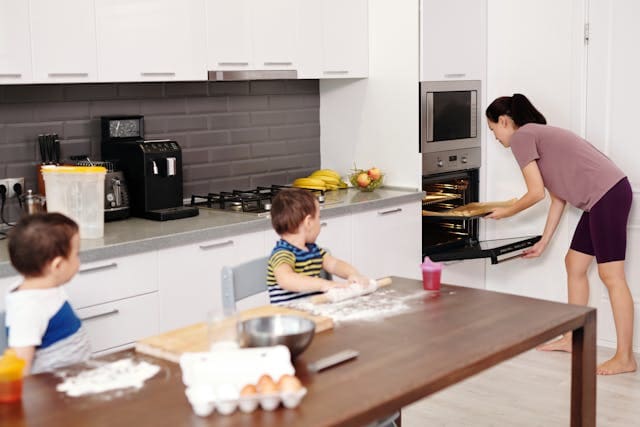
Conclusion: Creating a Safer Home Today
Protecting your children from burns, scalds, and fire-related injuries doesn’t require expensive renovations or complicated systems. Most effective prevention strategies involve simple awareness, consistent safety practices, and age-appropriate education for your children.
The statistics are clear: the vast majority of childhood burn injuries are preventable. By implementing the safety measures outlined in this guide, you can dramatically reduce your child’s risk of experiencing these painful and potentially serious injuries.
References:
-
UNICEF Parenting: Burns, Scalds and Fire Safety Tips https://www.unicef.org/parenting/safety/burns-scalds-fire-safety-tips
-
World Health Organization (WHO): Burns Fact Sheet https://www.who.int/news-room/fact-sheets/detail/burns
-
National Fire Protection Association (NFPA): Fire & Burn Safety for Families https://www.nfpa.org/Public-Education/Staying-safe/Preparedness/Fire-and-burn-prevention
-
American Burn Association: Burn Prevention https://ameriburn.org/prevention/
-
First Aid for Burns (by the American Academy of Pediatrics) https://www.healthychildren.org/English/safety-prevention/at-home/Pages/Burns-and-Scalds.aspx
-
Safe Kids Worldwide: Burn and Scald Injury Prevention https://www.safekids.org/tip/burn-and-scald-prevention-tips
